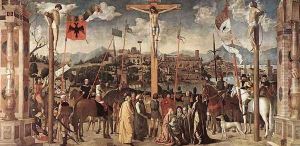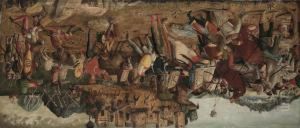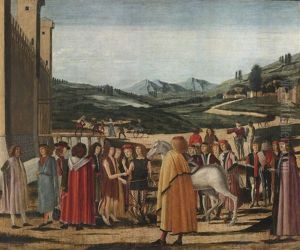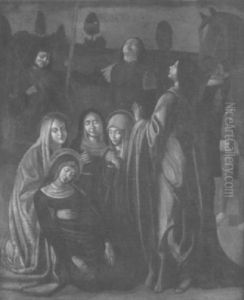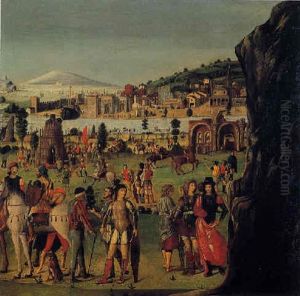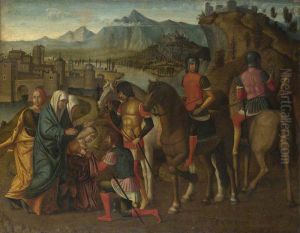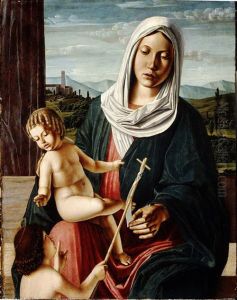Michele Da Verona Paintings
Michele da Verona, born Michele Gusnasco da Verona in 1470, was an Italian painter of the Renaissance period, active mainly in his hometown of Verona. His work signifies the transition from the late Gothic style to the more expressive and volumetric approaches of the Renaissance. Michele is somewhat less known than his contemporaries, yet his contributions to the art of northern Italy during this period are significant.
Michele's early life and training are not well-documented, but it is believed that he was influenced by the works of prominent artists such as Mantegna, Bellini, and perhaps even Leonardo da Vinci, through indirect channels. His style suggests that he was part of the Veronese school, which was known for its attention to detail, color, and the incorporation of architectural elements into paintings. Michele da Verona's works often depicted religious themes, landscapes, and occasionally, secular subjects, showcasing his versatility as an artist.
Throughout his career, Michele da Verona demonstrated a mastery in the use of perspective, a technique that was becoming increasingly important during the Renaissance as artists strove for more realistic representations. His landscapes are particularly noted for their depth and for the way they extend the space beyond the immediate focus of the painting, creating a sense of continuity and vastness. This approach not only reflected the growing interest in the natural world but also served as a backdrop that enhanced the narrative and emotional impact of his religious and mythological scenes.
Unfortunately, Michele da Verona did not achieve the same level of fame as some of his contemporaries, and as a result, his works were sometimes attributed to other artists. Despite this, his paintings can be found in several churches and collections in Verona and the surrounding regions, where they continue to be appreciated for their contribution to the development of Renaissance art in northern Italy. Michele da Verona passed away in 1537, leaving behind a body of work that, while not extensive, is valued for its artistic quality and historical significance.
